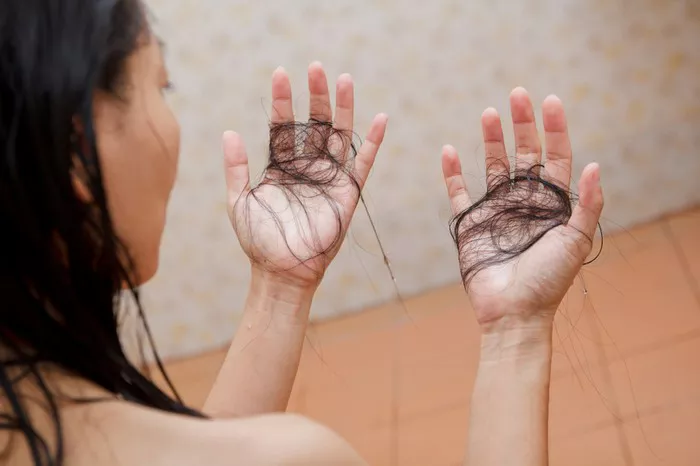Hair loss is a common concern that affects both men and women. While it is often associated with aging or genetics, many women experience hair loss at various stages of their lives. Female hair loss can be emotionally distressing, impacting self-esteem and overall well-being. In this article, we will explore the causes, symptoms, and potential solutions for female hair loss.
I. Causes of Female Hair Loss: Unraveling the Factors
1. Hormonal Changes: Hormonal fluctuations are a significant contributor to hair loss in women. Events such as pregnancy, childbirth, menopause, and the use of birth control pills can lead to imbalances that affect the hair growth cycle.
2. Genetics: Just like in men, genetic predisposition plays a role in female pattern baldness. If there is a family history of hair loss, women are more likely to experience it themselves.
3. Medical Conditions: Various medical conditions, such as thyroid disorders, polycystic ovary syndrome (PCOS), and autoimmune diseases, can contribute to hair loss. Addressing the underlying health issue is crucial in managing hair loss in these cases.
4. Nutritional Deficiencies: Inadequate intake of essential nutrients, including vitamins and minerals like iron and zinc, can impact hair health. A well-balanced diet is essential for promoting healthy hair growth.
5. Stress and Emotional Factors: High-stress levels and emotional distress can trigger hair loss. This is often a temporary condition known as telogen effluvium, where hair follicles enter a resting phase due to stress.
II. Symptoms of Female Hair Loss: Recognizing the Signs
1. Thinning Hair: One of the early signs of female hair loss is a noticeable thinning of the hair, particularly around the crown or part line. Hair may also become finer in texture.
2. Receding Hairline: While a receding hairline is commonly associated with male pattern baldness, some women may also experience a similar pattern of hair loss.
3. Excessive Hair Shedding: Women may notice an increased amount of hair shedding during activities like washing or brushing. This can be a result of changes in the hair growth cycle.
4. Bald Patches: In some cases, women may develop bald patches on the scalp. This can be indicative of more severe forms of hair loss.
5. Changes in Hair Texture: Hair loss can lead to changes in the texture of the remaining hair, making it more brittle or prone to breakage.
III. Solutions for Female Hair Loss: Taking Action
1. Topical Treatments: Minoxidil, a topical medication, is an FDA-approved treatment for female pattern baldness. It stimulates hair follicles and promotes hair regrowth. However, results may vary, and it requires consistent use.
2. Prescription Medications: Some prescription medications, such as spironolactone and finasteride, may be recommended by healthcare professionals to address hormonal imbalances contributing to hair loss.
3. Lifestyle Changes: Adopting a healthy lifestyle can positively impact hair health. This includes maintaining a balanced diet, managing stress, and avoiding excessive heat or chemical treatments.
4. Hair Care Practices: Gentle hair care practices, such as using a wide-tooth comb and avoiding tight hairstyles, can help minimize hair breakage and loss.
5. Hair Restoration Procedures: For more severe cases of hair loss, hair restoration procedures like hair transplantation may be considered. These procedures involve transplanting hair follicles from one part of the scalp to areas experiencing thinning or baldness.
IV. FAQs on Female Hair Loss:
1. Can hair loss in women be prevented?
While some causes of hair loss are genetic or hormonally related, adopting a healthy lifestyle, managing stress, and addressing underlying medical conditions can contribute to preventing or minimizing hair loss.
2. Is female hair loss reversible?
The extent to which hair loss can be reversed depends on the underlying cause. In some cases, hair regrowth is possible with the right treatments, while in others, managing the condition may prevent further loss.
3. Are over-the-counter products effective for female hair loss?
Some over-the-counter products, such as shampoos and supplements, may claim to promote hair growth. However, their effectiveness varies, and it’s essential to consult with a healthcare professional before trying these products.
4. Can stress cause hair loss in women?
Yes, high levels of stress can contribute to hair loss in women. Managing stress through relaxation techniques, exercise, and proper self-care can help mitigate its impact on hair health.
5. How long does it take for hair to regrow after treatment?
The timeline for hair regrowth varies among individuals and depends on the underlying cause of hair loss. It may take several months before noticeable improvements are seen with consistent treatment.
6. Are there natural remedies for female hair loss?
Some natural remedies, such as scalp massage, essential oils, and dietary changes, may support overall hair health. However, their efficacy as standalone treatments for significant hair loss is limited, and professional guidance is advisable.
In conclusion, female hair loss is a multifaceted issue with various causes and potential solutions. Understanding the underlying factors, recognizing symptoms, and seeking appropriate treatments can help women address and manage hair loss effectively. If you’re experiencing significant hair loss, it’s crucial to consult with a healthcare professional or a dermatologist for personalized guidance and recommendations.

